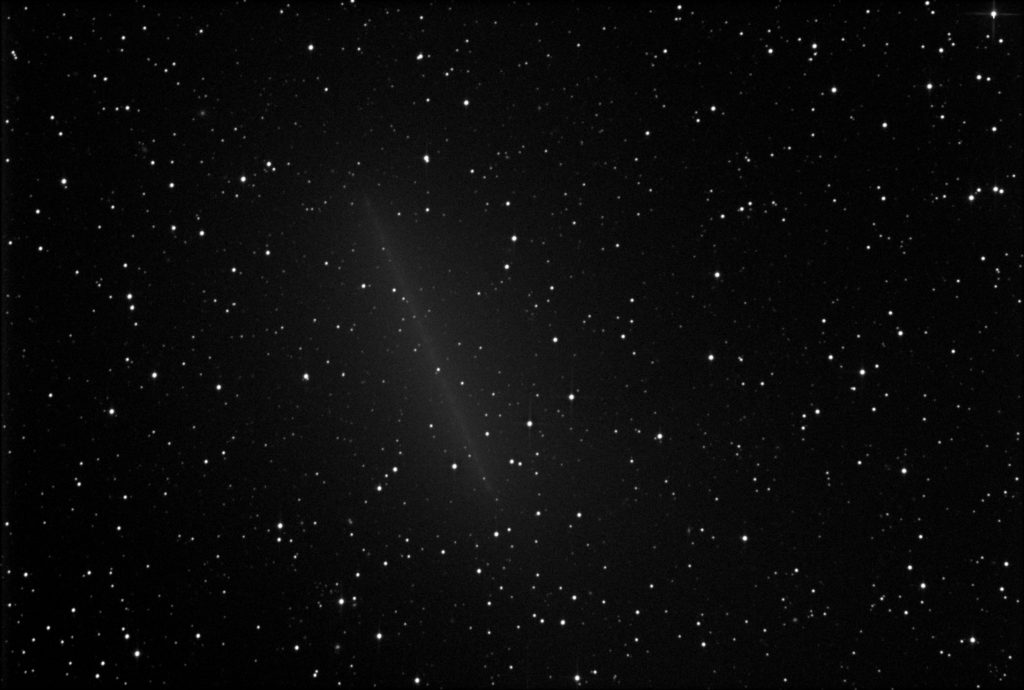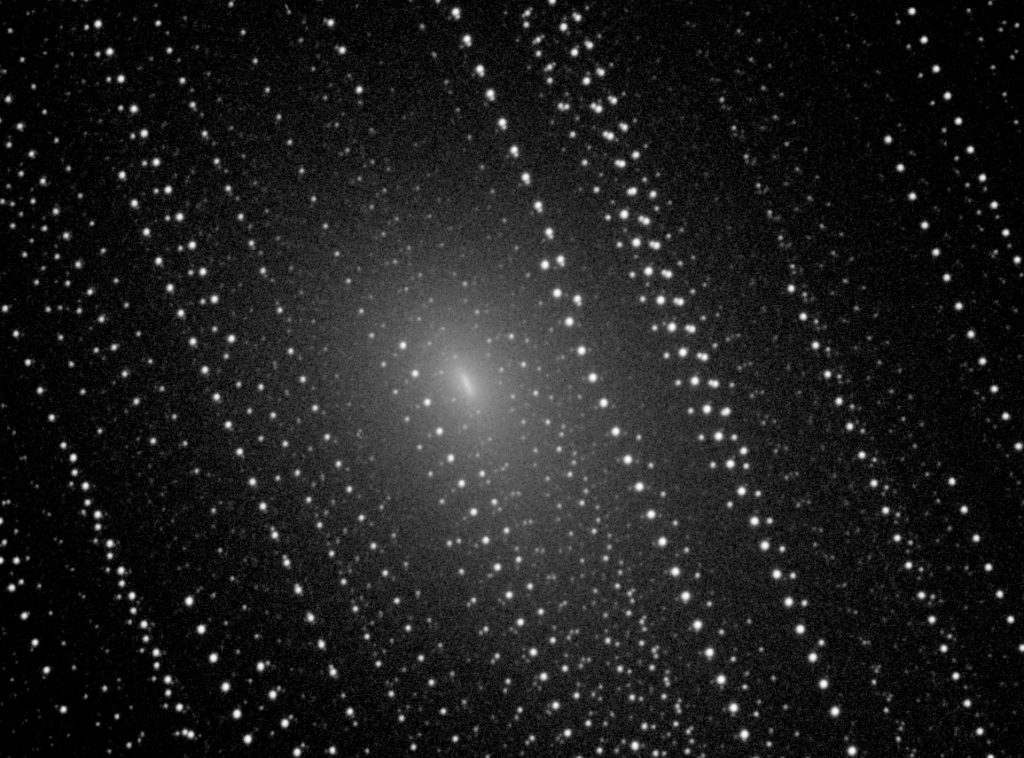I stayed up a little later (earlier?) than usual to see if the skies would still be dark enough to get some images of comet Honda-Mrkos-Pajdusakova (45P). Yesterday the comet rose above the eastern horizon just after 1 AM. Unfortunately, my eastern tree line has an elevation of 53° and the comet didn’t clear the trees until 5 AM, leaving just 35 minutes of dark sky. So, after taking pointing and test exposures, I was able to get twenty 60 second exposures before the PTO sky meter measured the sky starting to brighten.
Predictions made last December forecast the comet to be naked eye visible after perihelion on the 31st. But once it passed the Sun and started its outbound trip the comet did not meet the forecasts; not even close. The most obvious difference is the complete lack of a tail. Pre-perihelion photos show a small tight coma with a long thin tail. One current theory is the comet came close enough to the Sun to sublimate most of the surface volatile material leaving just enough to form the now large diffuse coma.
It is obvious from the above image how fast the comet is moving. The image shows only 60 seconds of motion yet the comet is badly streaked. The comet is currently traveling about 51,000 mph, but the apparent motion is primarily due to how close it is to the Earth, and right now the comet is quickly getting closer. The comet will pass perigee tomorrow morning (the 11th) at 2 AM (CST) at only 7.7 million miles.
The fact that the comet is so diffuse is what is preventing naked eye visibility and makes it a difficult binocular target as well. The approaching Moon is not going to make seeing the comet any easier for the next several days.


